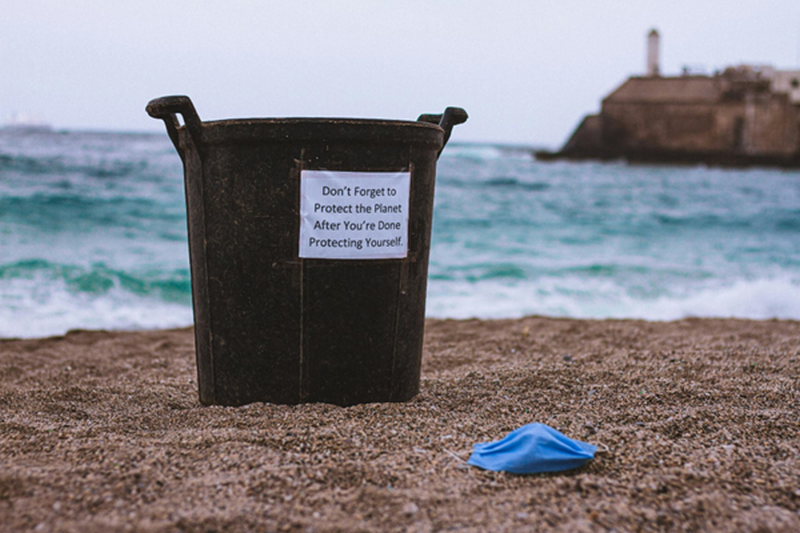As we lace up our hiking boots and set out to revel in the great outdoors, our minds are filled with images of pristine nature reserves and untouched wilderness. However, beneath this idyllic surface lurks a less visible threat: microplastics. These tiny particles have permeated even the most remote corners of the globe, posing the question of how we can minimize our exposure while still enjoying the natural world. This blog delves into the hidden world of microplastics and offers insights into navigating the great outdoors with a lesser footprint.
What Are Microplastics?
Microplastics are small plastic pieces less than five millimeters long which can be harmful to our ocean and aquatic life. They originate from a variety of sources, including larger plastic debris that degrades into smaller and smaller pieces. Additionally, microplastics include microbeads, which are man-made polyethylene plastic particles commonly added to health and beauty products, such as some cleansers and toothpaste. These tiny invaders are not just in our waterways, but are also airborne, settling on mountaintops and infiltrating soils.
The Extent of Microplastic Pollution
Recent studies have shown that microplastics are found in the most remote lakes, rivers, and even the air we breathe. They have been detected on the highest peaks and the deepest ocean trenches, indicating their widespread distribution. Despite their minuscule size, they have a colossal impact, affecting wildlife and ecosystems. This reality confronts outdoor enthusiasts with the challenge of trekking and exploring while mitigating their contribution to microplastic pollution.
Understanding the Impact
Microplastics are not only a concern for environmental health but for human health as well. They have been found in tap water, bottled water, and in the air, indicating that people are likely ingesting and inhaling them on a regular basis. While the long-term effects of microplastic exposure on human health are still under study, the potential risks highlight the importance of addressing this issue both in nature and in our daily lives. It’s important to learn how to protect yourself from microplastics in water in order to avoid any issues these pollutants may cause.
The Role of Science and Policy
Science plays a crucial role in uncovering the mysteries of microplastic pollution, from tracking their sources to understanding their impact on human and environmental health. Policy-makers are beginning to take action by banning microbeads and restricting single-use plastics, but there is still a long way to go. As individuals, staying informed and supporting policies aimed at reducing plastic pollution are steps we can all take to help lessen the burden of microplastics on the environment.
Engaging with Nature Mindfully
Enjoying the wilderness does not have to come at the expense of contributing to microplastic pollution. There are practices you can adopt to minimize your impact. Here are some suggestions:
- Pack out all your trash, ensuring that nothing you bring into a natural space is left behind.
- Opt for clothing and gear made from natural fibers instead of synthetic materials prone to shedding microplastics.
- Participate in clean-up efforts to help remove larger pieces of plastic that could degrade into microplastics.
- Reduce overall plastic use in your daily life to contribute to a decrease in plastic waste generation.
Additional Thoughts on Microplastic Research
The expanding field of microplastic research sheds light on how these particles migrate through ecosystems and their cumulative effect on organisms. With ongoing advancements in detection and analysis methods, scientists are beginning to unravel the complex pathways through which microplastics disseminate across the environment. This growing body of knowledge is crucial for developing more effective strategies to mitigate the spread of microplastics and safeguard ecological health.
Future Explorations with a Purpose
As we venture into the wilderness, let’s do so with an eye towards conservation. Participating in citizen science projects that track pollution or engaging in local conservation efforts can enrich our outdoor experience while contributing to the health of the planet. By taking steps to understand and combat microplastic pollution, we ensure that our natural spaces remain vibrant and accessible for future generations.
Community Involvement in Microplastic Reduction
Combatting microplastic pollution requires collective action at both local and global levels. Community-led initiatives, such as beach clean-ups and educational programs, play a vital role in raising awareness and reducing the amount of plastic waste that can turn into microplastics. By fostering a communal sense of responsibility towards our environment, these grassroots efforts can significantly contribute to the reduction of microplastic pollution.
Exploring the natural world is one of life’s great pleasures and an essential break from the digital realm. However, as we immerse ourselves in these experiences, it’s critical to remain aware of the invisible threat of microplastics. By adopting mindful practices and supporting broader initiatives to combat plastic pollution, we can enjoy nature more sustainably. Let’s trek lightly on the earth, leaving only footprints behind.
Article Submitted By Community Writer




